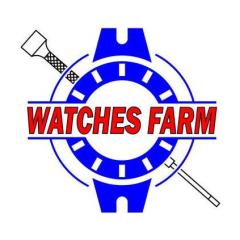-
Recently Browsing
- No registered users viewing this page.
-
Topics
-
Posts
-
By luiazazrambo · Posted
Bulova Accutron 2181 - had an open coil I managed to bring it back into life. Longines 9L - not serviced just pics Eterna-Matic Centenaire "61" - 1438U - not serviced just pics. Longines Cal 431 - not serviced just pics Lemania Cal 4650 - not serviced, just pics. -
By watchweasol · Posted
attached is the tech /parts sheet. . Can one ask how come it’s full of water. After being told that the waterproofing was not guaranteed. Problem being electronics don’t mix especially withe the power source being attached. You may be lucky but I should look out for a replacement movement or working donor to rob the movement from. C720.pdf -
By JeremyLaurenson · Posted
I thought this may be "right" forum to post this. After 7 months out in Switzerland I got my Navitimer back from Breitling. I had sent it off since its 20 years old to have a complete overhaul done... Nothing major wrong, but I did notice this seconds sundial skipping thingy.... $1300 later and 7 months later, I notice the 'skips' are still here unless the chronometer is engaged. I would think this is likely the hand binding up and maybe clearance with the dial, but at any rate Im interested as to whether this is something I should be returning the watch to Breitling for and insisting on being fixed. See below - 1 minute or so of regular running and then 1 minute with the chronograph engaged. -
A friend of mine just gave me an old pocket watch. The case is in very bad condition but the movement itself seems to be in a quite good shape. I can't identify which movement is this, since I have to find a missing winding stem. I attach few photos in a case somebody would be able to give some hints. Thank's folks
-
By WatchesFarm · Posted
Hello everyone, I recently received a request for advice on purchasing a vintage watch, a Waltham A-11 ORD. DEPT. I asked if they were aware that these types of watches have radioactive hands and dials... but they had no idea what I was talking about. So, I thought of creating a video that could help recognize them, starting from the distinctive details to using a Geiger counter. I hope you like it and find it useful for those venturing into the world of vintage watches. Bye.
-






Recommended Posts